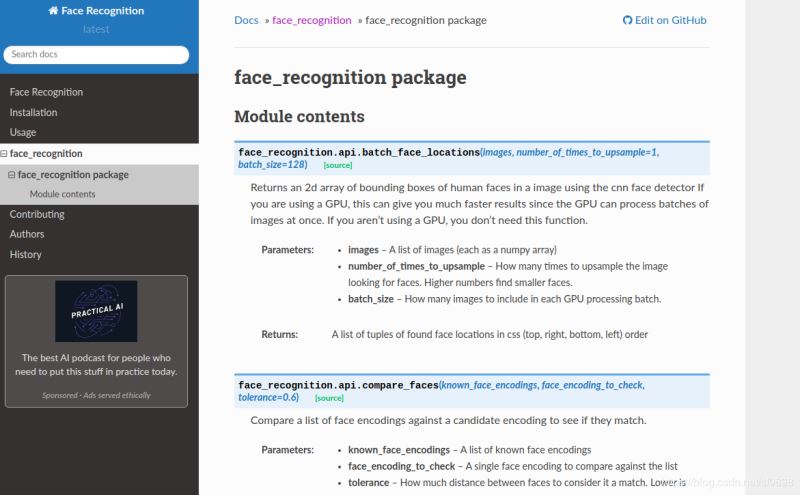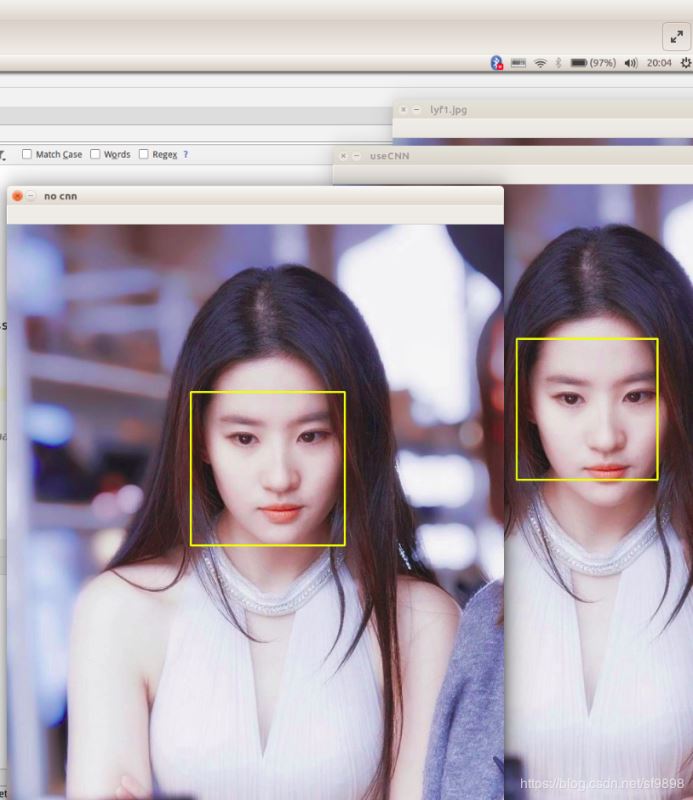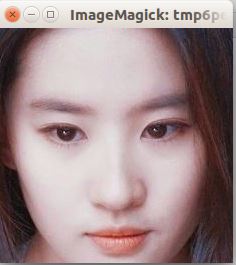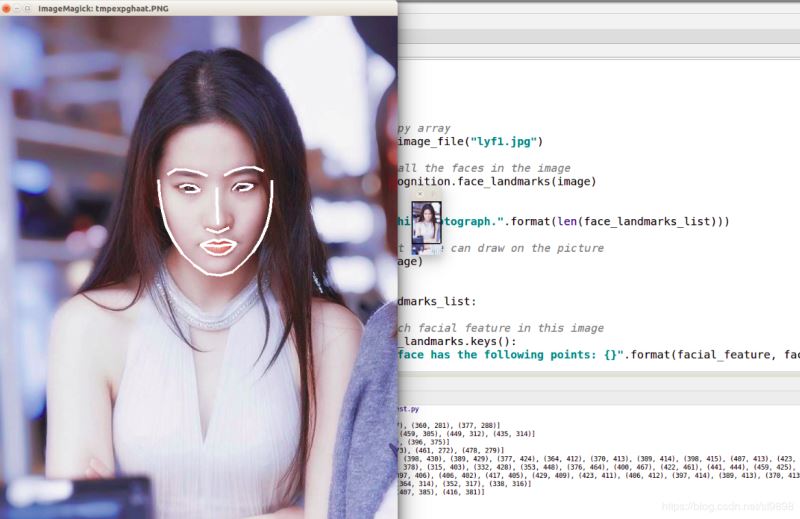您好,登錄后才能下訂單哦!
您好,登錄后才能下訂單哦!
前言
之前實踐了下face++在線人臉識別版本,這回做一下離線版本。github 上面有關于face_recognition的相關資料,本人只是做個搬運工,對其中的一些內容進行搬運,對其中一些例子進行實現。
官方描述:
face_recognition是一個強大、簡單、易上手的人臉識別開源項目,并且配備了完整的開發文檔和應用案例,特別是兼容樹莓派系統。本項目是世界上最簡潔的人臉識別庫,你可以使用Python和命令行工具提取、識別、操作人臉。本項目的人臉識別是基于業內領先的C++開源庫 dlib中的深度學習模型,用Labeled Faces in the Wild人臉數據集進行測試,有高達99.38%的準確率。但對小孩和亞洲人臉的識別準確率尚待提升。
(關于兼容樹莓派,以后有板子了再做一下)
下面兩個鏈接劃重點
https://github.com/ageitgey/face_recognition/blob/master/README_Simplified_Chinese.md
https://face-recognition.readthedocs.io/en/latest/face_recognition.html
環境配置
實際上只需要安裝face_recognition,當然,沒有opencv的也需要安裝一下opencv
pip3 install face_recognition
圖片準備
由于需要做一些圖片的比對,因此需要準備一些圖片,本文圖片取自以下鏈接
https://www.zhihu.com/question/314169580/answer/872770507
接下來開始操作
官方還有提供命令行的操作(這個沒去做),本文不做這個,我們只要是要在python中用face_recognition,因此定位到這一塊。

這個api文檔地址就是上面的第二個鏈接。進去之后可以看到:

part1.識別圖片中的人是誰
代碼
# part1
# 識別圖片中的人是誰
import face_recognition
known_image = face_recognition.load_image_file("lyf1.jpg")
unknown_image = face_recognition.load_image_file("lyf2.jpg")
lyf_encoding = face_recognition.face_encodings(known_image)[0]
unknown_encoding = face_recognition.face_encodings(unknown_image)[0]
results = face_recognition.compare_faces([lyf_encoding], unknown_encoding)
# A list of True/False values indicating which known_face_encodings match the face encoding to check
print(type(results))
print(results)
if results[0] == True:
print("yes")
else:
print("no")
結果
<class 'list'>
[True]
yes
part2.從圖片中找到人臉
代碼
# part2
# 從圖片中找到人臉(定位人臉位置)
import face_recognition
import cv2
image = face_recognition.load_image_file("lyf1.jpg")
face_locations_useCNN = face_recognition.face_locations(image,model='cnn')
# model – Which face detection model to use. “hog” is less accurate but faster on CPUs.
# “cnn” is a more accurate deep-learning model which is GPU/CUDA accelerated (if available). The default is “hog”.
face_locations_noCNN=face_recognition.face_locations(image)
# A list of tuples of found face locations in css (top, right, bottom, left) order
# 因為返回值的順序是這樣子的,因此在后面的for循環里面賦值要注意按這個順序來
print("face_location_useCNN:")
print(face_locations_useCNN)
face_num1=len(face_locations_useCNN)
print(face_num1) # The number of faces
print("face_location_noCNN:")
print(face_locations_noCNN)
face_num2=len(face_locations_noCNN)
print(face_num2) # The number of faces
# 到這里為止,可以觀察兩種情況的坐標和人臉數,一般來說,坐標會不一樣,但是檢測出來的人臉數應該是一樣的
# 也就是說face_num1 = face_num2; face_locations_useCNN 和 face_locations_noCNN 不一樣
org = cv2.imread("lyf1.jpg")
img = cv2.imread("lyf1.jpg")
cv2.imshow("lyf1.jpg",img) # 原始圖片
# Go to get the data and draw the rectangle
# use CNN
for i in range(0,face_num1):
top = face_locations_useCNN[i][0]
right = face_locations_useCNN[i][1]
bottom = face_locations_useCNN[i][2]
left = face_locations_useCNN[i][3]
start = (left, top)
end = (right, bottom)
color = (0,255,255)
thickness = 2
cv2.rectangle(img, start, end, color, thickness) # opencv 里面畫矩形的函數
# Show the result
cv2.imshow("useCNN",img)
# for face_location in face_locations_noCNN:
#
# # Print the location of each face in this image
# top, right, bottom, left = face_location
# # 等價于下面的這種寫法
for i in range(0,face_num2):
top = face_locations_noCNN[i][0]
right = face_locations_noCNN[i][1]
bottom = face_locations_noCNN[i][2]
left = face_locations_noCNN[i][3]
start = (left, top)
end = (right, bottom)
color = (0,255,255)
thickness = 2
cv2.rectangle(org, start, end, color, thickness)
cv2.imshow("no cnn ",org)
cv2.waitKey(0)
cv2.destroyAllWindows()
結果
face_location_useCNN:
[(223, 470, 427, 266)]
1
face_location_noCNN:
[(242, 489, 464, 266)]
1
圖片效果大致是這樣

part3.找到人臉并將其裁剪打印出來(使用cnn定位人臉)
代碼
# part3
# 找到人臉并將其裁剪打印出來(使用cnn定位人臉)
from PIL import Image
import face_recognition
# Load the jpg file into a numpy array
image = face_recognition.load_image_file("lyf1.jpg")
face_locations = face_recognition.face_locations(image, number_of_times_to_upsample=0, model="cnn")
print("I found {} face(s) in this photograph.".format(len(face_locations)))
for face_location in face_locations:
top, right, bottom, left = face_location
print("A face is located at pixel location Top: {}, Left: {}, Bottom: {}, Right: {}".format(top, left, bottom, right))
face_image = image[top:bottom, left:right]
pil_image = Image.fromarray(face_image)
pil_image.show()
結果
I found 1 face(s) in this photograph.
A face is located at pixel location Top: 205, Left: 276, Bottom: 440, Right: 512
圖片效果大致是這樣

part4.識別單張圖片中人臉的關鍵點
代碼
# part4 識別單張圖片中人臉的關鍵點
from PIL import Image, ImageDraw
import face_recognition
# Load the jpg file into a numpy array
image = face_recognition.load_image_file("lyf1.jpg")
# Find all facial features in all the faces in the image
face_landmarks_list = face_recognition.face_landmarks(image)
# print(face_landmarks_list)
print("I found {} face(s) in this photograph.".format(len(face_landmarks_list)))
# Create a PIL imagedraw object so we can draw on the picture
pil_image = Image.fromarray(image)
d = ImageDraw.Draw(pil_image)
for face_landmarks in face_landmarks_list:
# Print the location of each facial feature in this image
for facial_feature in face_landmarks.keys():
print("The {} in this face has the following points: {}".format(facial_feature, face_landmarks[facial_feature]))
# Let's trace out each facial feature in the image with a line!
for facial_feature in face_landmarks.keys():
d.line(face_landmarks[facial_feature], width=5)
# Show the picture
pil_image.show()
結果
I found 1 face(s) in this photograph.
The left_eyebrow in this face has the following points: [(305, 285), (321, 276), (340, 277), (360, 281), (377, 288)]
The right_eye in this face has the following points: [(422, 313), (432, 303), (446, 302), (459, 305), (449, 312), (435, 314)]
The nose_bridge in this face has the following points: [(394, 309), (394, 331), (395, 354), (396, 375)]
The right_eyebrow in this face has the following points: [(407, 287), (424, 278), (442, 273), (461, 272), (478, 279)]
The bottom_lip in this face has the following points: [(429, 409), (419, 421), (408, 428), (398, 430), (389, 429), (377, 424), (364, 412), (370, 413), (389, 414), (398, 415), (407, 413), (423, 411)]
The chin in this face has the following points: [(289, 295), (291, 323), (296, 351), (303, 378), (315, 403), (332, 428), (353, 448), (376, 464), (400, 467), (422, 461), (441, 444), (459, 425), (473, 403), (484, 377), (490, 351), (493, 323), (493, 296)]
The top_lip in this face has the following points: [(364, 412), (377, 407), (389, 403), (397, 406), (406, 402), (417, 405), (429, 409), (423, 411), (406, 412), (397, 414), (389, 413), (370, 413)]
The left_eye in this face has the following points: [(327, 308), (339, 304), (353, 306), (364, 314), (352, 317), (338, 316)]
The nose_tip in this face has the following points: [(375, 383), (386, 387), (396, 390), (407, 385), (416, 381)]
圖片效果

到此這篇關于Python3 利用face_recognition實現人臉識別的方法的文章就介紹到這了,更多相關Python3 人臉識別內容請搜索億速云以前的文章或繼續瀏覽下面的相關文章希望大家以后多多支持億速云!
免責聲明:本站發布的內容(圖片、視頻和文字)以原創、轉載和分享為主,文章觀點不代表本網站立場,如果涉及侵權請聯系站長郵箱:is@yisu.com進行舉報,并提供相關證據,一經查實,將立刻刪除涉嫌侵權內容。